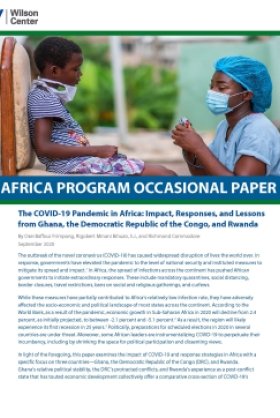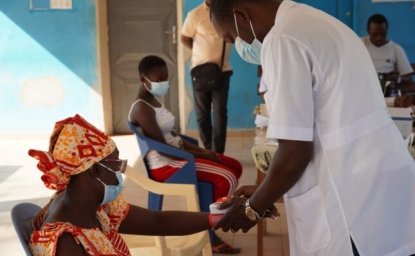The COVID-19 Pandemic in Africa: Impact, Responses, and Lessons from Ghana, the Democratic Republic of the Congo, and Rwanda


The novel coronavirus (COVID-19) has caused widespread disruption of lives across the world. Africa’s first case of COVID-19 was confirmed in Egypt on February 4, 2020. By mid-August 2020, Africa’s COVID-19 numbers had spiked to 1,084,904 confirmed cases, 24,683 deaths, and 780,046 recoveries (BBC Coronavirus in Africa). The rise of COVID-19 on the continent poses many challenges on the health, socio-economic, and political fronts; yet, many countries are using innovative methods to combat and mitigate the spread of the virus.
In this paper, Osei Baffour Frimpong, Rigobert Minani Bihuzo, S.J., and Richmond Commodore examine the impact of COVID-19 and response strategies in Africa with a specific focus on Ghana, the Democratic Republic of the Congo (DRC), and Rwanda. They discuss COVID-19 trends, risks, and vulnerabilities in Africa, while also offering a comparative analysis of the health, political, and socio-economic effects of COVID-19 in Ghana, the DRC, and Rwanda. They also provide an overview of the most effective strategies and key shortcomings, including a gender gap in COVID-19 responses for women. The authors’ case studies provide useful lessons for other African countries seeking greater resilience against COVID-19 and future pandemics.
The Africa Program works to address the most critical issues facing Africa and US-Africa relations, build mutually beneficial US-Africa relations, and enhance knowledge and understanding about Africa in the United States. The Program achieves its mission through in-depth research and analyses, public discussion, working groups, and briefings that bring together policymakers, practitioners, and subject matter experts to analyze and offer practical options for tackling key challenges in Africa and in US-Africa relations.
Read moreAuthors

Lead Regional Researcher and Conflict Analyst, West Africa Network for Peacebuilding (WANEP), Ghana

Head of the Research and Socio-Political Department, Centre d’Etudes pour l’Action Sociale (CEPAS), the Democratic Republic of the Congo

Research and Policy Analyst, African Center for Economic Transformation (ACET), Ghana

Africa Program

Explore More
Browse Insights & Analysis

Russia’s Security Approach to Public Health

WIPO is AWOL

Lessons from the COVID-19 Pandemic Can Help Achieve Health for All
